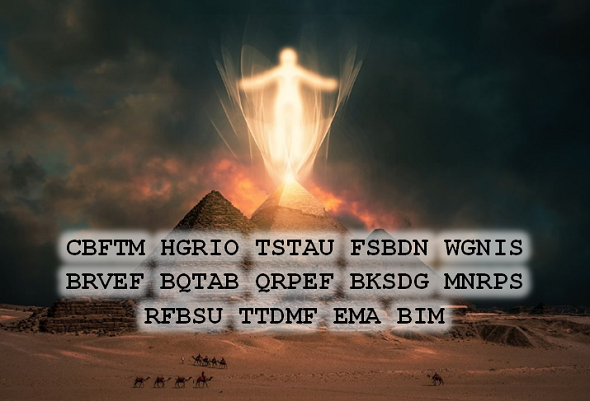CB FT MH GR IO TS TA UF SB DN WG NI SB RV EF BQ TA BQ RP EF BK SD GM NR PS RF BS UT TD MF EM AB IM
Thouless published this cryptogram in the following way (the positions of the spaces is changed):
CBFTM HGRIO TSTAU FSBDN WGNIS BRVEF BQTAB QRPEF BKSDG MNRPS RFBSU TTDMF EMA BIM
How was it broken?
As mentioned, Thouless first message was broken within a few weeks. The identity of the person who solved it is not known, neither is the codebreaking method he or she used. At least, it is clear that this person didn’t use the following two techniques:
- Dictionary attack: Today, it is possible to break a Playfair cipher by guessing the keyword. The word SURPRISE is contained in virtually every English dictionary, so a computer that tests one keyword candidate after the other will sooner or later find it. However, in 1948, the anonymous codebreaker certainly had no computer available.
- Hill climbing: Hill climbing is the current super-algorithm in historical codebreaking. However, in 1948, neither the algorithm nor the computer technology necessary to implement it existed.
There are several books that explain how a Playfair can be solved without computer support, for instance Helen Fouché Gaines’ Cryptanalysis and André Langie’s Cryptography. The concept is to guess a few words in the cleartext and to derive the 5×5 matrix based on the peculiarities of the Playfair cipher (for instance, if AB->XY then BA->YX).
However, breaking a Playfair cryptogram manually is pretty difficult, especially if the ciphertext is as short as here (the Thouless message consists of 66 letters). The examples described in the books mentioned above all refer to much longer messages. In addition, these books assume that a few words of the cleartext are known. Nevertheless, none of these books describes the complete Playfair codebreaking procedure – instead, most of the trial-and-error reckoning necessary is simply omitted.
All in all, this means that the anonymous solver of the first Thouless message did a great job. I am asking myself:
- Which words did the anonymous codebreaker guess?
- How did he or she reconstruct the matrix based on this knowledge?
Or did the anonymous solver find a completely different way to break Thouless’ Playfair message? Any comments about this mystery are welcome.
Follow @KlausSchmeh
Further reading: The Top 50 unsolved encrypted messages: 43. The Rayburn murder cryptogram
Linkedin: https://www.linkedin.com/groups/13501820
Facebook: https://www.facebook.com/groups/763282653806483/



Kommentare (10)